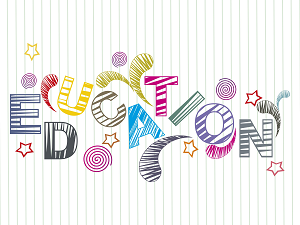The annual SXSWedu phenomenon remains one of the most innovative, fresh, and prognostic venues in the U.S. for envisioning the future of the education and technology marketplace. This year, the SXSWedu Conference & Festival was conducted in Austin, Texas from March 6-9.

SXSWedu is a part of the SouthbySouthwest family of conferences, fostering “innovation in learning by hosting a diverse and energetic community of stakeholders from a variety of backgrounds in education.”
In future articles I plan to do some exciting deep-dive exploration of the many developments to come out of this year’s conference, but for now, I want to provide a canopy of observation, a window into the heart and soul of this conference.
Clearly, the 2017 SXSWedu conference exhibited two thematic ‘darlings’: social justice and VR/AR/MR technologies. Both themes were hugely present, weaving their irresistible charms into conference sessions, playground exhibits, startup competitions, and even the exhibit hall. And of course, these two themes [social justice and VR/AR/MR] sometimes found an astute nexus, combining themselves into such demonstrations as a pair of Global Nomad VR presentations on promoting international social consciousness through VR-delivered empathy; and the use of popular hip-hop messaging through modern video and VR media by Rapport Studios.
But the main notion I want to convey is that VR/AR/MR (and chiefly, VR) was ubiquitous: as I declared previously—a conference ‘darling.’ But something else is changing this year. The whole notion of virtual reality in education is becoming a bit more mature. A tad more thoughtful in nature. And that’s a good thing.
You see, VR-themed conference presentations often leave me with that uncomfortable “Sham Wow” feeling. (Sham Wow was an ill-famed infomercial in the United States, a hyped-up advertisement that featured Vinnie, the sales hawker promoting a ‘miracle’ cleaning towel. Speaking rapidly and rhythmically, with his rich Bronx accent and gel-spiked hair, Vinnie whittled away every excuse you could muster against buying his amazing product. Then the obligatory customer testimonials followed. But the viewer was always left wondering if s/he was being ‘played.’ Watch the commercial, but substitute the phrase “VR” every time you hear the phrase “Sham Wow” for a surreal experience.) As a result, I leave most conferences writhing in uncertainty, the kind that occurs when hype collides with potential; when exposure to exciting new technology meets with equal parts shudder and disdain.
Meta demonstrating their “ridiculously comfortable augmented reality headsets” at SXSWedu in a combined workshop.
Now, however, we are witnessing (as relates to VR in education) a phenomenon we educators call the “critical friend” role. A critical friend communicates accurately, candidly, yet constructively about the strengths, weaknesses, and potential ‘in-the-field” pitfalls associated with a technology, aiming for improvement, success, and even greater potential. Other than the sheer numbers of presentations on the VR/AR/MR theme, a palpable wave of critical thinking about this new educational medium is now emerging. What has changed is this: almost every presentation at SXSWedu was equal parts critical assessment and excitement for VR/AR/MR technologies in schools. No more Sham Wow. Let’s get down to business. I mean education. –Len Scrogan

